Australian deck design ideas to consider this summer
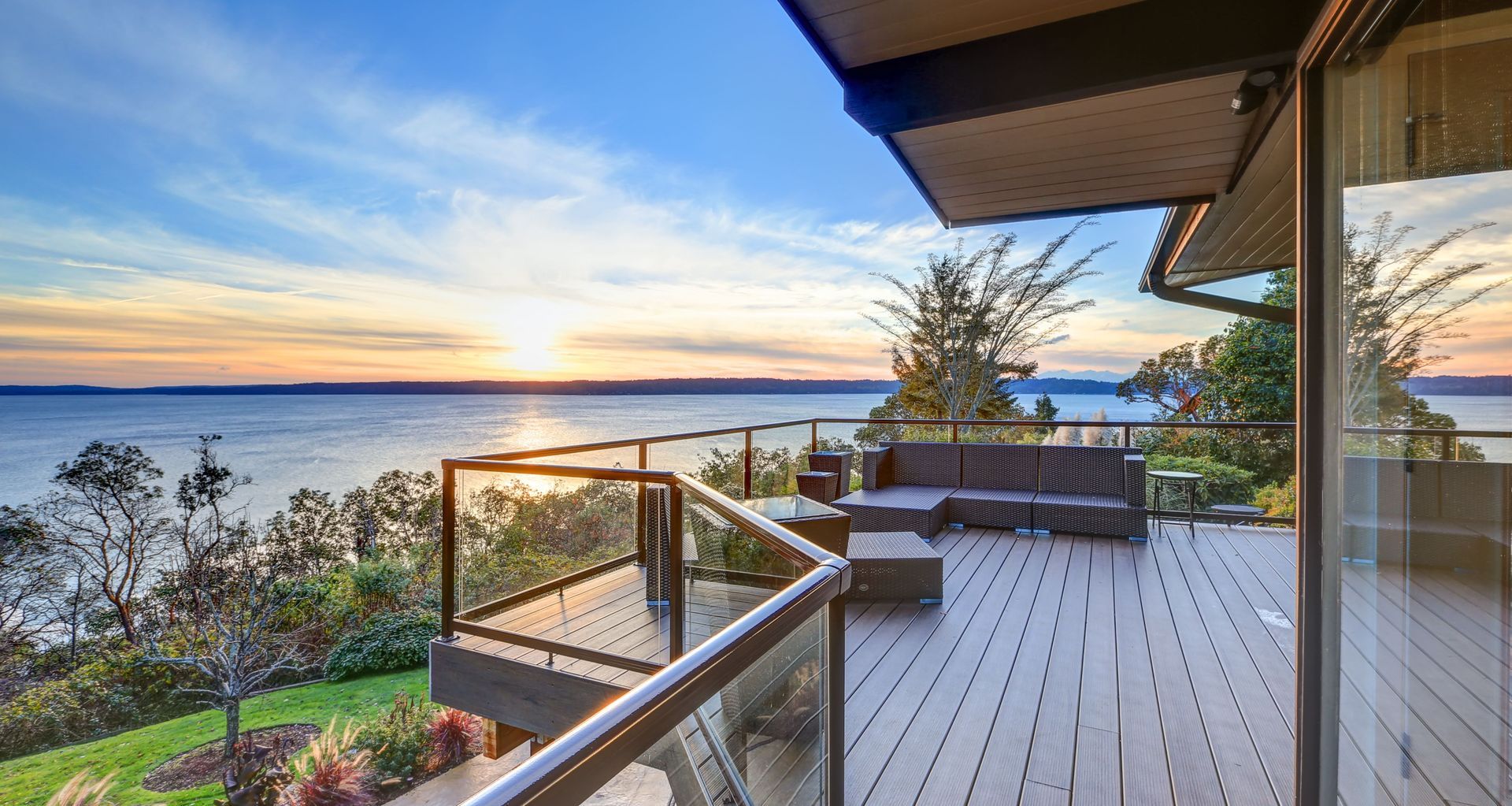
A well-designed deck can significantly enhance your home, offering a range of styles to suit various needs. Whether you're looking for a simple yet functional space for family barbecues on warm summer evenings or a more sophisticated, elevated deck by your backyard pool, there’s a design to match every vision. With so many options available, you’re sure to find the perfect deck idea that complements your home and lifestyle.
1. Smart tech-integrated deck
A smart tech-integrated deck brings convenience and luxury to your outdoor space with features like outdoor speakers, automated mood lighting, and smart shading systems. These elements can be controlled from your smartphone, allowing you to adjust settings effortlessly for different occasions. This type of deck is ideal for tech-savvy homeowners who love to entertain or relax outdoors with all the comforts of modern technology. It's particularly beneficial for those who enjoy seamless integration of their home’s tech features, enhancing both functionality and ambience.
Pros
- Convenience: Easily control lighting, music, and other features from your smartphone or voice assistant.
- Modern appeal: Adds a futuristic and cutting-edge touch to your outdoor space.
- Automation: Automates lighting, temperature, and other systems, enhancing comfort and convenience.
Cons
- Costly: Installation of smart features can increase the overall cost of the deck.
- Maintenance: Requires regular updates and potential troubleshooting, adding extra upkeep.
Related article: Brilliant deck lighting ideas for your home
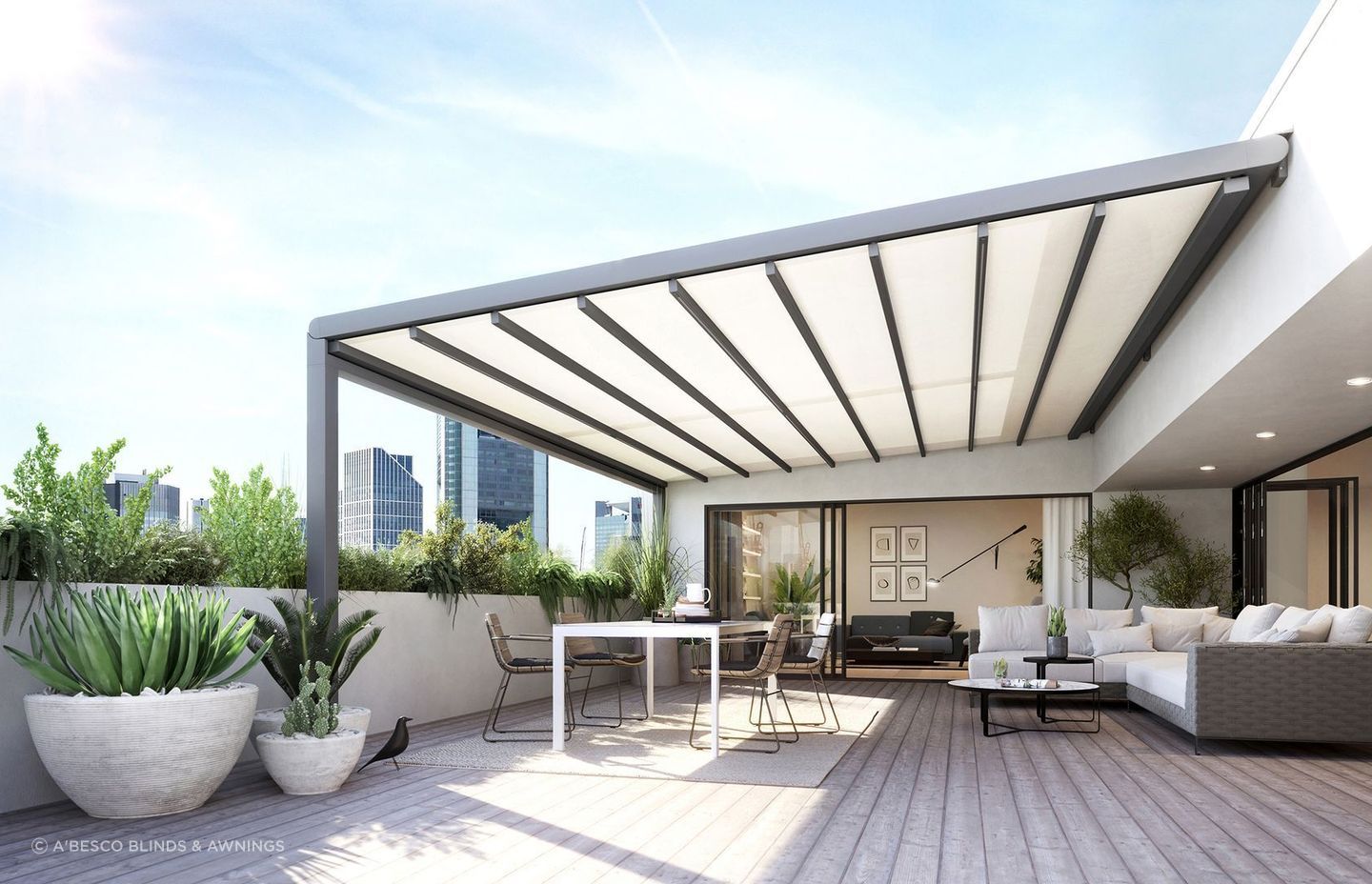
2. Indoor-outdoor living flow
A deck designed to flow seamlessly from the indoors creates a harmonious connection between your living space and your garden. This can be achieved by using matching flooring between the indoor and outdoor areas or installing large sliding doors that open directly onto the deck. It’s a great choice for families or anyone who enjoys spending time outside while still having easy access to the comforts of their home. This type of deck is perfect for those who want to maximise their space and blend their interior and exterior living areas for a unified atmosphere.
Pros
- Increased space: Expands your usable living area by creating a seamless connection.
- Natural light: Brings in more daylight, brightening both the interior and exterior.
- Flexible use: Ideal for both relaxation and hosting, as it combines indoor comfort with outdoor beauty.
Cons
- Exposure to the elements: The open design may let outdoor weather affect the indoor space.
- Privacy concerns: The lack of boundaries might reduce privacy, especially in busy areas.
Related article: How well-designed outdoor living spaces add value to your home
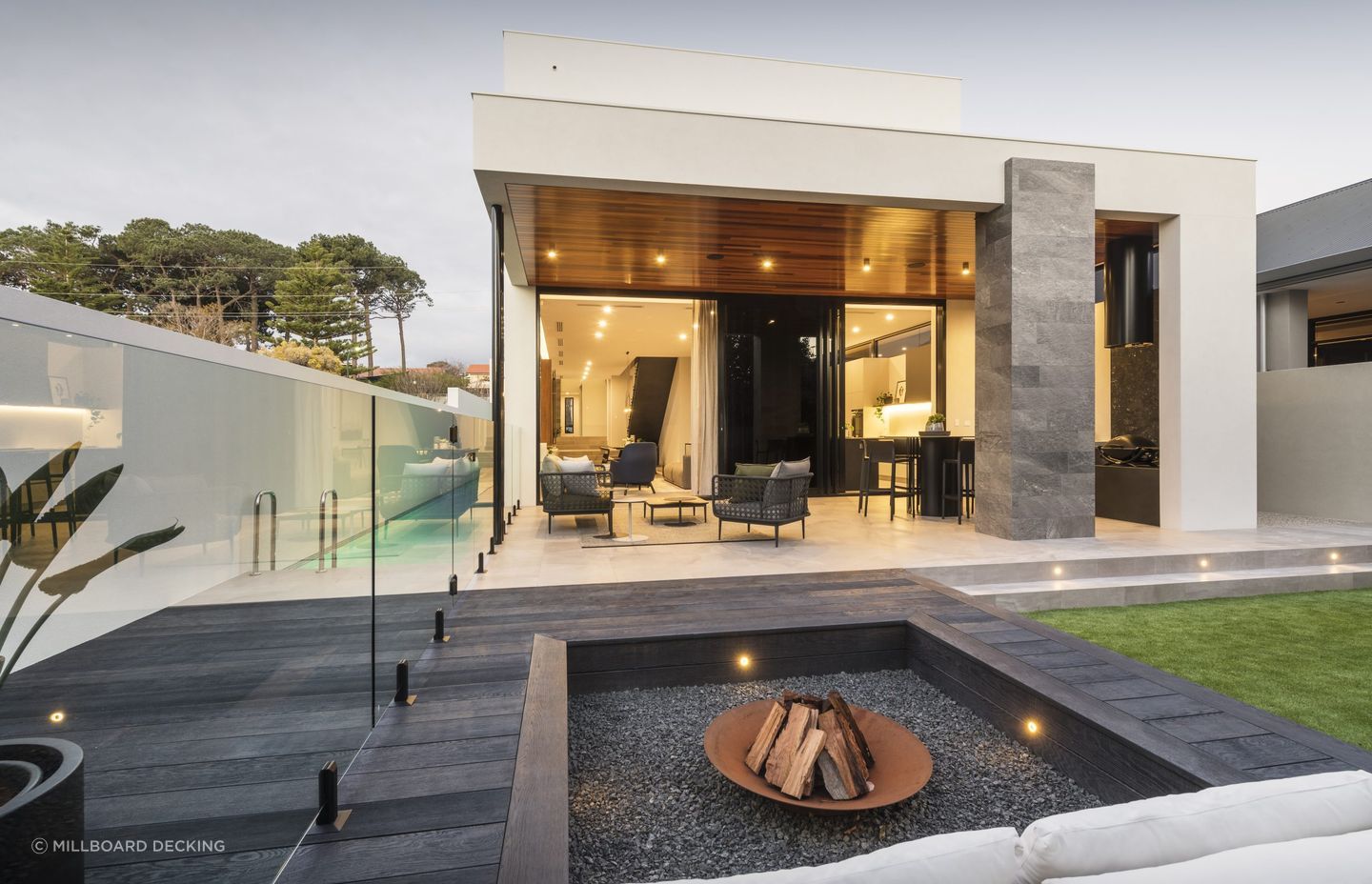
3. Minimalist concrete deck
For those who prefer clean lines and modern aesthetics, a minimalist concrete deck is a low-maintenance yet stylish option. The neutral tones and sleek design suit contemporary homes and urban settings, providing a versatile foundation for outdoor dining or entertaining. This deck style benefits homeowners who appreciate minimalism and durability, offering a space that’s both practical and visually striking. It's particularly well-suited for those with modern homes or city dwellers looking to create an effortlessly chic outdoor space.
Pros
- Durability: Concrete is highly resistant to wear and tear, lasting for years without significant damage.
- Customisable design: Can be designed with various finishes and textures, offering flexibility in aesthetics.
- Easy to clean: Smooth surfaces are simple to maintain, requiring only occasional cleaning.
Cons
- Hard surface: Concrete can be uncomfortable to sit on for long periods without additional cushions.
- Seasonal use: Tends to stay cold in winter, making it less appealing during colder months.
4. Multi-level decking
A multi-level deck is perfect for properties with uneven terrain or sloped gardens. By dividing the deck into distinct levels, you can create separate zones for lounging, dining, and relaxing, making the most of the available space. This type of deck is ideal for larger families or anyone who enjoys hosting events, as it allows for flexible use of space while providing a more structured outdoor environment. Homeowners with sloped gardens will benefit most, as it allows them to turn challenging terrain into an elegant, functional outdoor living area.
Pros
- Enhanced organisation: Provides distinct zones for various activities, such as dining, lounging, or playing.
- Maximises sloped areas: Ideal for sloping land, turning otherwise unusable space into a functional deck.
- Visual interest: Multi-level decks add dynamic appeal, creating a more visually engaging outdoor area.
Cons
- Complex construction: Multi-level decks are more complicated to design and build, increasing the cost.
- Increased maintenance: More levels and components mean extra cleaning and maintenance work.
5. Deck with built-in seating
Built-in seating is a fantastic space-saving solution that adds both function and style to your deck. Incorporating seating around the deck’s perimeter creates a cosy, inviting environment without cluttering the space with furniture. Ideal for small families or homeowners who entertain frequently, this design helps maximise seating without sacrificing space. It’s also perfect for those who like the idea of a low-maintenance, integrated design, as built-in seating offers durability and comfort while keeping the deck neat and organised.
Pros
- Space efficiency: Built-in seating maximises available deck space by eliminating bulky furniture.
- Integrated design: The seating blends seamlessly into the deck, offering a sleek and organised look.
- Durable: As part of the structure, built-in seating is often sturdier and more resilient than traditional furniture.
Cons
- Fixed layout: Built-in seating can't be moved or rearranged, limiting flexibility.
- Upfront cost: Custom-built seating can increase the initial cost of deck construction.
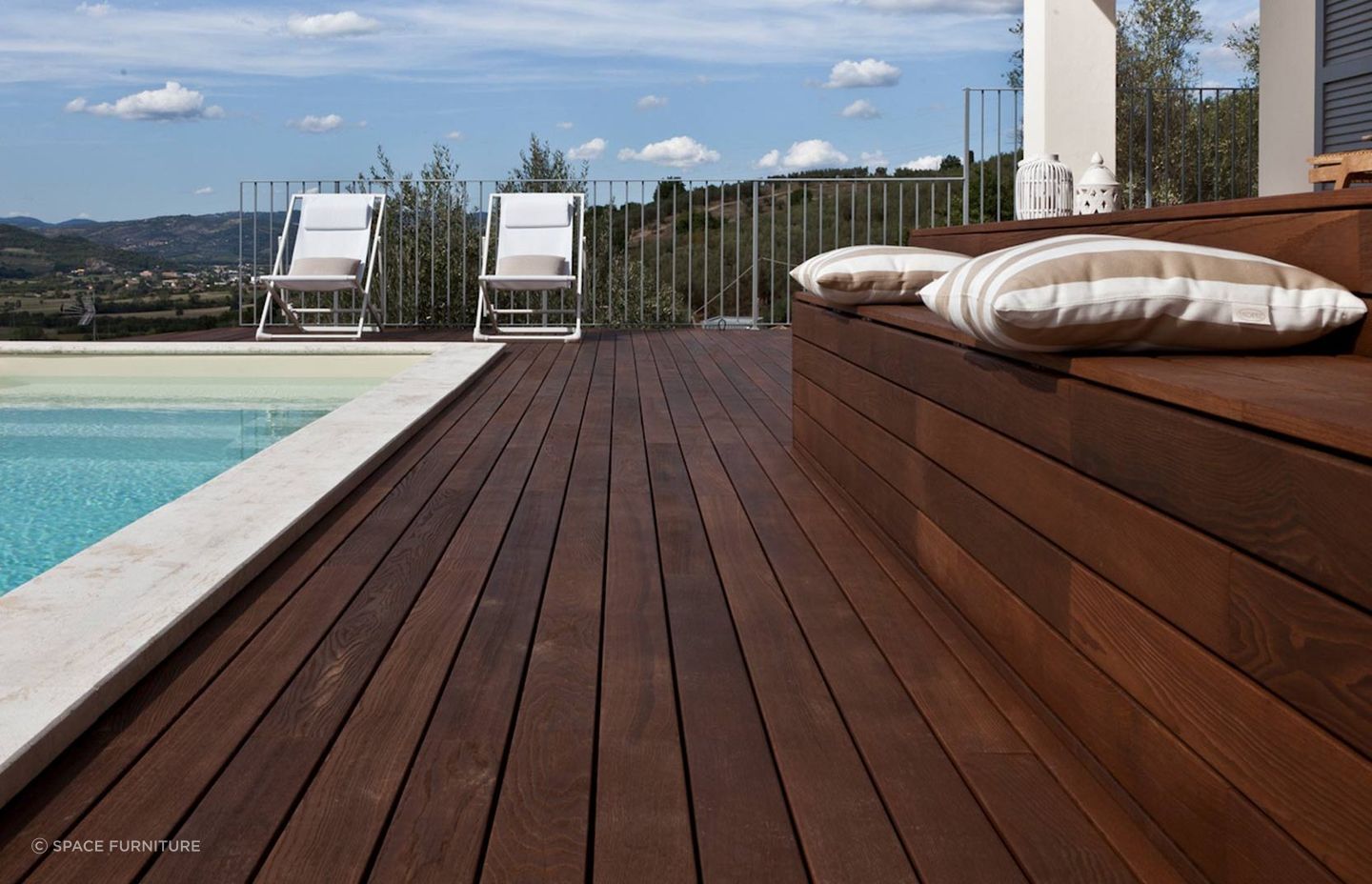
6. Botanical deck garden
Surrounding your deck with lush greenery and plants creates a tranquil retreat that feels like an extension of nature. Adding climbing vines, trees, and colourful flowers can provide privacy, shade, and a refreshing atmosphere, perfect for those who value sustainability or a calming outdoor environment. Garden lovers, eco-conscious homeowners, and anyone looking to transform their deck into a personal oasis will benefit from this design. It’s particularly ideal for individuals or families who enjoy gardening or desire a peaceful outdoor retreat surrounded by nature’s beauty.
Pros
- Natural privacy: Plants can act as natural screens, offering more seclusion in outdoor spaces.
- Thermal comfort: Plants provide shade, reducing the temperature of your deck on hot days.
- Aesthetic value: Lush greenery and flowers create a peaceful, visually pleasing environment.
Cons
- Ongoing maintenance: Plants require regular care, such as watering, trimming, and dealing with pests.
- Space constraints: Extensive planting might take up valuable deck space, limiting functional areas.
Related ideas: How to decorate your deck — stylish ideas for 2024
7. Luxury poolside deck
A luxury poolside deck enhances your pool area by creating a stylish and functional space for lounging and entertaining. Whether you add a shaded pergola, a sunken seating area, or a firepit, the deck can be tailored to meet your needs. This deck style is perfect for homeowners with a swimming pool who want to create a luxurious and relaxing outdoor environment. Families with children or those who host pool parties will particularly benefit from this design, as it provides a space for relaxation, socialising, and enjoying the pool in style.
Pros
- Versatile space: Offers a variety of functions, from lounging and dining to entertaining guests.
- Sophisticated aesthetic: Adds elegance to your pool area, elevating the overall look of your home’s exterior.
- Customisable features: Can include options like shaded areas, lighting, or a firepit for added comfort and ambience.
Cons
- High cost: Luxury features can increase the overall cost of the deck.
- Increased maintenance: Poolside decks require regular cleaning and maintenance due to exposure to water and debris.
Related article: Choosing the best pool for you — concrete vs fibreglass pools compared
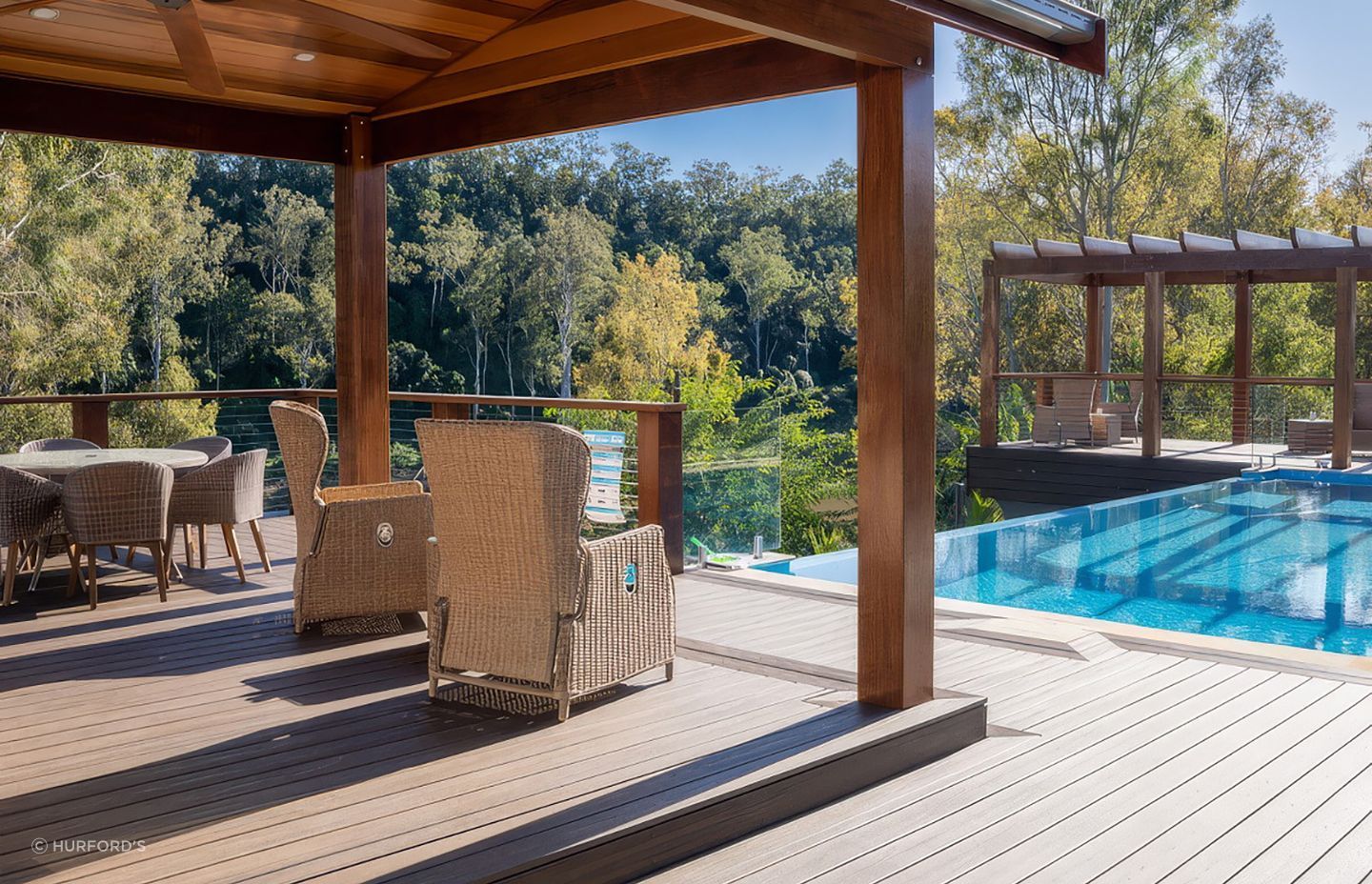
Plan your dream decking project with confidence and ease
As you can there are some great decking design ideas to consider before getting yourself underway. From the choice of wood or material to the spacing and layout, the more informed your decision is the better the results will be.
This article was updated on 19th of December 2024
Explore an extensive selection of outdoor decking systems from top Australian suppliers on ArchiPro
